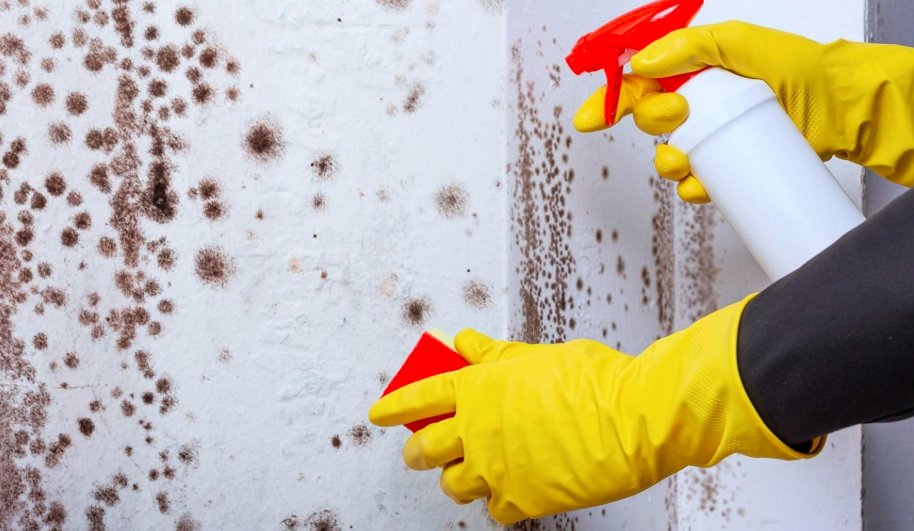Scotland faces a massive repair bill of hundreds of millions of pounds due to the growing crisis of damp and mould in homes, experts warn. The Royal Incorporation of Architects in Scotland has urged ministers to launch a nationwide program to fix unfit houses, as the problem turns into a serious public health threat that could lead to deaths if not addressed soon.
The Growing Scale of Damp and Mould Issues
Reports of damp and mould in Scottish social housing have surged by 200 percent since 2019, hitting record levels across the country. In Glasgow alone, complaints jumped by 500 percent, from 758 to 4,609 cases, showing how bad things have gotten in urban areas. This rise ties into the cost of living pressures, where families cut back on heating to save money, leading to more condensation and growth of harmful fungi.
Experts point out that over 700,000 homes now fail basic fitness standards, up by 600,000 since before the pandemic. Many of these issues stem from old buildings with poor insulation and ventilation, made worse by recent wet weather patterns. Campaign groups like Living Rent highlight that tenants often face delays in getting help, leaving them stuck in unhealthy conditions for months or even years.
The Scottish Housing Regulator’s latest survey from 2024-25 shows one-third of social tenants lack trust in their landlords to fix problems quickly. This lack of confidence means many do not report issues at all, so the true number of affected homes could be much higher.

Health Risks from Toxic Mould Exposure
Damp and mould pose real dangers to health, especially for children, the elderly, and those with breathing problems. Exposure can trigger asthma attacks, allergies, and infections, with some mould types releasing toxins that harm the lungs and immune system. Recent data reveals dozens of Scots ended up in hospital emergency rooms blaming mould in their homes for severe respiratory issues.
In one stark case, families in Glasgow reported kids needing urgent care after living with black mould for extended periods. The death of young Awaab Ishak in England from mould-related illness has echoed here, pushing calls for stronger rules. Tenants describe constant coughing, skin rashes, and fatigue, which disrupt daily life and work.
Here are key health effects linked to damp and mould:
- Worsened asthma and wheezing in vulnerable groups.
- Increased risk of infections like bronchitis.
- Mental health strain from living in poor conditions.
- Long-term damage to lungs from toxic spores.
NHS advice stresses quick action to remove mould, but many tenants say basic fixes like bleach washes fall short without deeper repairs.
Economic Impact and Repair Challenges
The cost to fix this crisis runs into hundreds of millions, with estimates starting at over 100 million pounds just for social housing upgrades. Retrofitting homes with better insulation, ventilation, and heating systems demands big investments from local and national governments. Budget cuts in affordable housing, like the 163 million pound reduction in 2023, have slowed progress and left many projects unfunded.
Landlords face rising complaints, but penalties remain weak, leading to slow responses. A new report from Citizens Advice Scotland notes that poor energy efficiency in homes adds to the problem, as families avoid turning on heat amid high bills. This cycle not only hits household budgets but also strains the wider economy through lost productivity and higher healthcare costs.
To illustrate the surge in reports, consider this table of changes from 2019 to recent years:
| Area | 2019 Reports | Recent Reports | Increase (%) |
|---|---|---|---|
| Scotland Overall | 8,712 | 26,514 | 200 |
| Glasgow | 758 | 4,609 | 500 |
| Aberdeen | 1,649 | 1,841 | 12 |
These figures come from freedom of information requests and show the uneven but rapid growth. Experts argue that without a national fund, the bill will keep climbing as more homes deteriorate.
Government Response and Tenant Campaigns
The Scottish Parliament passed a housing bill on September 30, 2025, aimed at boosting standards and preventing homelessness, including tougher rules on damp fixes. Inspired by Awaab’s Law in England, it requires social landlords to act faster on serious mould cases, with deadlines for emergency repairs. Councils now gain powers to cap rent hikes at 6 percent, easing pressure on tenants.
Groups like the Scottish Tenants Organisation demand a zero-tolerance policy with real fines for neglectful landlords. They warn of an imminent public health emergency unless funding flows in for retrofits. Living Rent has run campaigns urging tenants to report issues and join unions for support, emphasizing that disrepair, not lifestyle, causes most mould.
Recent parliamentary hearings heard from tenants waiting years for repairs, linking the crisis to broader housing shortages. The government promises more tracking of mould data starting next year, but critics say action lags behind the need.
Tenant Stories and Paths Forward
Everyday Scots share frustrating tales of battling mould, from scrubbing walls weekly to moving furniture to hide patches. One Fife tenant described severe black mould covering entire rooms, with only temporary washes offered instead of full fixes. Reddit forums buzz with advice on ventilation and dehumidifiers, but many stress that root causes like leaky roofs need professional attention.
Looking ahead, architects push for a full upgrade program to make homes fit for the future, tying into green energy goals. With winter approaching, experts fear a spike in cases unless urgent steps happen now. Tenants and advocates call for community involvement to pressure leaders for change.
Readers, if this issue hits close to home, share your experiences in the comments below and spread the word to raise awareness. Together, we can push for healthier homes across Scotland.


















